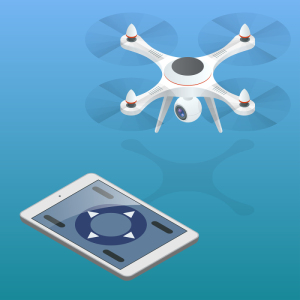by
Thomas Dworetzky, Contributing Reporter | June 19, 2017
Drones have been in the news – and the air – more than ever.
Now Swedish researchers have demonstrated in simulated trials that they could be used to deliver lifesaving defibrillators to those suffering from cardiac arrest – as much as a critical 16 minutes faster than speeding ambulances.
“Cardiac arrest is one of the major killers in the western world. Every minute is crucial; I would say every second is crucial,” study leader Jacob Hollenberg, director of the Centre for Resuscitation Science at the Karolinska Institute,
told The Guardian.



Ad Statistics
Times Displayed: 130299
Times Visited: 7399 MIT labs, experts in Multi-Vendor component level repair of: MRI Coils, RF amplifiers, Gradient Amplifiers Contrast Media Injectors. System repairs, sub-assembly repairs, component level repairs, refurbish/calibrate. info@mitlabsusa.com/+1 (305) 470-8013
How big a deal is that? “Every minute that passes from collapse to [cardiopulmonary resuscitation] or defibrillation, the chances of survival goes down by 10 percent,” he said.
In fact, the survival rate after 10 to 12 minutes without resuscitation “is basically zero,” he advised, noting that, “there’s a huge difference in using the defibrillator within the first few minutes. Even if you improve the timing of the ambulances in these types of situations, it’s too late – only one in 10 victims survive”.
The study, appearing in JAMA this week, made use of a 12.5 pound, eight-rotor drone created by the Swedish Transportation Agency. It was able to manage a payload of a 1.61 pound defibrillator.
The unmanned vehicle could cruise at 47 mph.
The craft were put in a firehouse north of Stockholm.
The trials showed that the median time from dispatch to arrival at the site of the simulated emergency was 5 minutes, 21 seconds, compared to 22 minutes for ambulances during a retrospective period from 2006 to 2014 in the same area, according to researchers.
“If we can decrease the time in cardiac arrest from collapse to defibrillation by a few minutes, hundreds of lives would be saved each year,” Hollenberg said,
according to the New Scientist.
The Swedish scientists are now developing a deployment plan with emergency services to send drones for real – a clinical trial of sorts – to see if such a test would show similar improvements in outcomes for cardiac patients. “Hopefully we will be up and running within a year or two,” he told the publication.
Hollenberg sees a future for drone use in health care well beyond just the present work. They could prove invaluable in emergencies like allergic reactions and car accidents.
“I am all about saving lives,” Hollenberg told The Guardian. “We have to work together with the authorities and air traffic control systems.”
Drone use is, in fact, developing throughout the health care delivery sector.
In December, 2016, a trial using U.S.-made Zipline drones began in Tanzania to
bring blood to mothers and infants in remote rural areas to combat the blood loss during childbirth that is one of the major reasons for the deaths of newborns and mothers in hard-to-reach regions.
And in April, 2016, Google was
awarded a patent that describes a dispatch system, like an emergency intercom, that can call for a drone to fly in with an urgent delivery of any number of medical items, such as a splint, an inhaler, medicines, or a defibrillator on demand.

